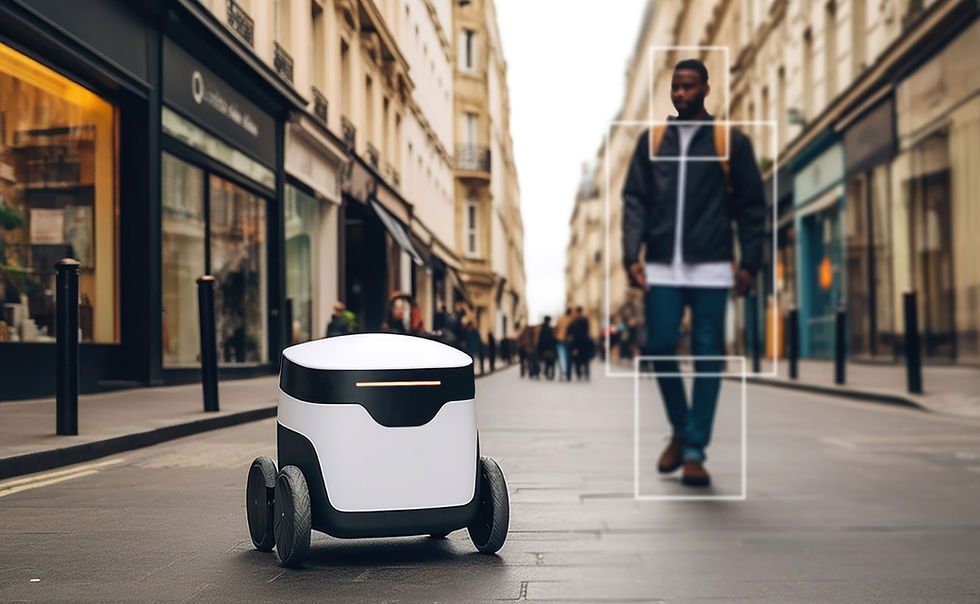Top AI Trends for 2025 According to IBM
- Alick Mouriesse
- Dec 20, 2024
- 3 min read
Updated: Feb 22

Photo by Possessed Photography on Unsplash
The landscape of artificial intelligence (AI) is evolving rapidly, and 2025 promises transformative changes that could reshape industries and daily life. As a pioneer in technology and innovation, IBM has established itself as a leading authority in artificial intelligence. With decades of experience and a strong commitment to advancing AI research and applications, IBM is well-positioned to provide insights into the field. According to IBM and several other major players in AI, there are eight important trends to monitor in the upcoming year.
1. Agentic AI
Agentic AI refers to intelligent systems capable of reasoning, planning, and taking action. These agents can break down complex problems and create multi-step plans, interacting with tools and databases to accomplish their goals. While the utility of AI agents is widely recognized, today's models often struggle with consistent logical reasoning, particularly in complex scenarios. Improvements in this area will be crucial for the effectiveness of AI agents in 2025.

Photo by Nick Fewings on Unsplash
2. Inference Time Compute
Inference time compute is the next frontier in AI processing. This innovation allows models to spend time "thinking" before providing an answer, with the duration varying based on the complexity of the query. Enhancements in inference reasoning can be made without altering the underlying model, presenting a dual opportunity to improve AI capabilities both during training and inference.
Photo by Markus Spiske on Unsplash
3. Very Large Models
Large language models (LLMs) are expected to grow significantly, with future models potentially reaching up to 50 trillion parameters. This trend signals a move towards more robust AI systems capable of handling extensive datasets and complex tasks.

Photo by Google DeepMind on Unsplash
4. Very Small Models
Alongside the growth of large models, there will also be a rise in very small models, which operate effectively on personal devices without the need for extensive computational resources. These models can perform specific tasks with efficiency, making AI more accessible.
Photo by Annie Spratt on Unsplash
5. Advanced Use Cases
In 2025, we can expect to see AI applications that go beyond current capabilities. For instance, customer service bots may evolve to solve complex issues rather than merely routing tickets. Additionally, AI systems will likely enhance IT networks proactively and adapt to security threats in real time.
Photo by ZHENYU LUO on Unsplash
6. Near Infinite Memory
As context windows for LLMs expand to millions of tokens, we are approaching an era of near-infinite memory. This advancement will enable AI systems, such as customer service chatbots, to recall every interaction with users, potentially enhancing the personalization of services.

Photo by Kelly Sikkema on Unsplash
7. Human-in-the-Loop Augmentation
The integration of AI with human expertise will become increasingly vital. Studies have shown that a chatbot outperformed physicians in clinical reasoning, yet when paired with doctors, the results were less effective. Improving how professionals can leverage AI tools in their workflow will be essential for maximizing benefits.

Photo by Aarón Blanco Tejedor on Unsplash
8. Community Input
Finally, the evolving nature of AI trends emphasizes the importance of community feedback. Engaging users in discussions about future trends can illuminate areas of interest and innovation that may not yet be apparent.
Photo by John Schnobrich on Unsplash
Conclusion
As we look towards 2025, these trends in AI promise to usher in new opportunities and challenges. It's crucial for educational institutions like University 365 to stay current with these developments. At University 365, we continuously update our academic content and curriculum to integrate the latest trends, ensuring our programs are relevant and aligned with the future of technology.

Comentários